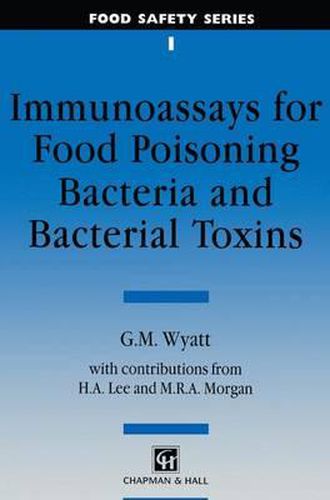Readings Newsletter
Become a Readings Member to make your shopping experience even easier.
Sign in or sign up for free!
You’re not far away from qualifying for FREE standard shipping within Australia
You’ve qualified for FREE standard shipping within Australia
The cart is loading…






The range and power of rapid methods for detecting food-poisoning bacteria are expanding fast. This book provides a complete yet concise summary of the latest techniques using antibody technology, including genetically manipulated antibodies. Starting with an assessment of traditional microbiological methodology and the difficulties that a complex food presents as an assay matrix, the authors then cover the selection of a suitable immunogen, raising antibodies (both monoclonal and polyclonal) and the relative merits of different assay formats, including ELISAs, immunoaffinity columns, flow cytometry, microscopy, dipsticks and others, together with their applications. The book concludes with an evaluation of commercially available immunoassays and equipment, and a critical comparison with other recently developed rapid methods. The book will enable the reader to develop new assays and make the best use of existing ones, understand the background and theory behind the use of immunoassays and yet gives sufficient technical detail to be used as a laboratory manual. Practising scientists in food production, research or analysis whose work involves or touches on the detection of food-poisoning bacteria may find it useful.
$9.00 standard shipping within Australia
FREE standard shipping within Australia for orders over $100.00
Express & International shipping calculated at checkout
The range and power of rapid methods for detecting food-poisoning bacteria are expanding fast. This book provides a complete yet concise summary of the latest techniques using antibody technology, including genetically manipulated antibodies. Starting with an assessment of traditional microbiological methodology and the difficulties that a complex food presents as an assay matrix, the authors then cover the selection of a suitable immunogen, raising antibodies (both monoclonal and polyclonal) and the relative merits of different assay formats, including ELISAs, immunoaffinity columns, flow cytometry, microscopy, dipsticks and others, together with their applications. The book concludes with an evaluation of commercially available immunoassays and equipment, and a critical comparison with other recently developed rapid methods. The book will enable the reader to develop new assays and make the best use of existing ones, understand the background and theory behind the use of immunoassays and yet gives sufficient technical detail to be used as a laboratory manual. Practising scientists in food production, research or analysis whose work involves or touches on the detection of food-poisoning bacteria may find it useful.